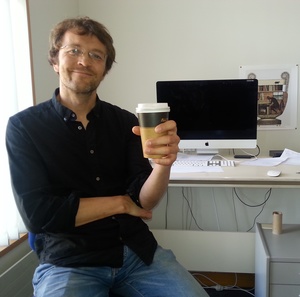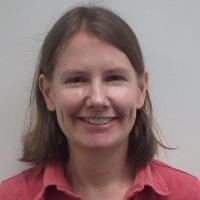Title: Learning to talk like a baby
Speaker: Associate Professor Alistair Knott, University of Otago / Soul Machines

Alistair Knott is an Associate Professor in the Computer Science department at the University of Otago. He studied Psychology and Philosophy at Oxford University, then took a MSc and PhD in Artificial Intelligence at the University of Edinburgh. His PhD research was on theories of discourse structure, focussing on how coherence relations are signalled by sentence and clause connectives. His postdoc work was in text generation, on Edinburgh University’s ILEX project, which developed one of the first text generators to be deployed on the web. After moving to New Zealand, Ali developed an interest in dialogue models, building a mixed-initiative multi-speaker dialogue system that combined HPSG and Discourse Representation Theory. Aside from these topics, Ali's main research interest for the last 20 years has been in models of how language is implemented in the brain. His focus is on models of the interface between language and the sensorimotor system, that address how it is we can talk about the things we see and do. In 2012 he published a programmatic model of this interface (‘Sensorimotor Cognition and Natural Language Syntax’, MIT Press). This model proposes that certain elements of syntactic structure have their origin in the structure of the sensorimotor routines involved in perceiving events in the world, and in the structure of the circuits which store these events in working memory. In 2017, Ali began working on a commercial contract with the Auckland-based AI startup Soul Machines. This company creates biologically realistic avatars that can engage in dialogues with human users. There is an emphasis on modelling dialogue agents’ physical bodies and sensory systems, and how these interface with actual brain mechanisms.. which makes it an ideal environment for Ali. Ali also works on the ethical and social implications of AI. In January 2016 co-founded the AI and Society discussion group at Otago University. This year he co-founded Otago’s Centre for AI and Public Policy, which is actively engaging with the New Zealand government to provide oversight of the predictive analytics tools used by government departments.
Abstract:
In recent years, computational linguists have embraced neural network models, and the vector-based representations of words and meanings they use. But while computational linguists have readily adopted the machinery of neural network models, they have been slower to embrace the original aim of neural network research, which was to understand how brains work. A large community of neural network researchers continues to pursue this ‘cognitive modelling’ aim, with very interesting results. But the work of these more cognitively minded modellers has not yet percolated deeply into computational linguistics. In my talk, I will argue the cognitive modelling tradition of neural networks has much to offer computational linguistics. I will outline a research programme that situates language modelling in a broader cognitive context. The programme is distinctive in two ways. Firstly, the initial object of study is a baby, rather than an adult. Computational linguistics models typically aim to reproduce adult linguistic competence in a single training process, that presents an ‘empty’ network with a corpus of mature language. I’ll argue that this training process doesn’t correspond to anything in human experience, and that we should instead aim to model a more gradual developmental process, that first achieves babylike language, then childlike language, and so on. Secondly, the new programme studies the baby's language system as it interfaces with her other cognitive systems, rather than by itself. It pays particular attention to the sensory and motor systems through which a baby engages with the physical world, which are the primary means by which it activates semantic representations. I’ll argue that the structure of these sensorimotor systems, as expressed in neural network models, offer interesting insights about certain aspects of linguistic structure. I will conclude by demoing a model of the interface between language and the sensorimotor system, as it operates in a baby at an early stage of language learning.
